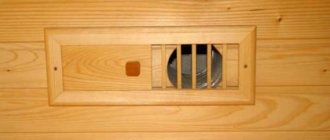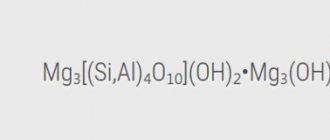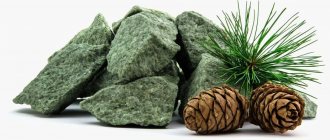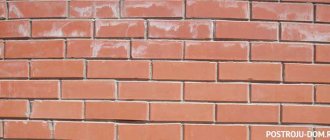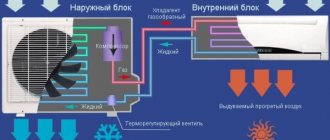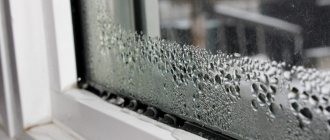Mineral wool
Mineral wool is used not only as insulation, but also as a fire-retardant material. For example, basalt wool is used in places with elevated temperatures, where other thermal insulation, such as polystyrene foam, cannot be installed.
Advantages
Positive qualities of insulation based on mineral wool:
- Long service life;
- Large selection of materials, both in density and thickness;
- Fire resistance;
- Not food for rodents;
- Vapor permeable;
- Do not support the growth of mold and fungi;
- Good sound insulation;
- Low thermal conductivity;
- Easy installation.
Flaws
Although rodents are not interested in mineral wool as food, they can live in it. Also, mineral wool must be protected from the wind, otherwise the fibers and heat will be blown away. Therefore, when insulating walls, it is necessary to install a windproof layer.
Mineral wool in rolls
Mineral wool has a low thermal conductivity coefficient due to the air between the fibers. But if you press it down, the fibers will be compressed, and there will be much less air in them. As a result, thermal conductivity will increase and it will become easier for cold air flows to pass into the room, and for warm ones to escape. Therefore, mineral wool insulation is installed loosely, but at the same time tightly, so that there are no gaps.
When working with mineral wool, you must wear personal protective equipment, as it generates dust. If glass wool dust gets into the respiratory system, skin or eyes, irritation occurs.
Mineral wool must be protected from moisture, especially those based on basalt. If the insulation gets wet, you will have to throw it away, since even after drying, its thermal insulation properties will not return.
Glass wool
Fiberglass insulation is made from broken glass, as well as sand, dolomite, and soda. Compared to basalt wool, glass wool has fibers that are 2 or even 4 times longer, making it stronger and more resilient. Therefore, after pressing, this thermal insulation restores its porosity, even with a minimum material density of 11 kg/m 3.
Advantages
Glass wool insulation has the following positive qualities:
- Resistant to chemicals, do not cause metal corrosion;
- Do not shrink;
- Frost-resistant;
- They have low weight and low hygroscopicity;
- They absorb sound well.
Flaws
At temperatures above the maximum, glass wool loses its elasticity and shape, which is why it is not recommended for use in places with elevated temperatures, such as chimneys. When exposed to constant fire, it burns out.
Stone wool or glass wool, which is better to buy?
So, the object is ready for installation of thermal insulation, but there is no solution to the question of which material to choose? Then let's conduct a detailed study of the properties of insulation to once and for all close the dilemma: stone wool or glass wool, which is better?
- Raw materials for production.
Glass wool, as before, is produced from broken glass and glass production waste. From the mixture, fibers are obtained, which are formed into webs. Its competitor is based on environmentally friendly raw materials - melted stones of the basalt group. During cooling, threads are formed from the mass, which are held together by an organic binder. - Temperature resistance.
In the insulation of technical objects, thermal indicators are decisive. The temperature for using glass wool is limited to 400 °C, but its opponent can easily tolerate values up to 750 °C, since the melting point of basalt is over 1000 °C. So decide whether stone wool or glass wool is better for your equipment. - Fire resistance.
The operation of technical pipelines is associated with risks. Accidental fire is one of the causes of accidents. Insulation made of non-flammable wool from molten stones will give as much as 180 minutes of extra time. This is how much the stove can withstand an open flame. A short exposure to fire only causes the organic binder to melt, while the glass wool is sintered into a dense crust. - Shrinkage resistance.
Production processes often involve vibration phenomena, and how cotton wool behaves under such conditions is important. Elastic fibers from molten stones retain their elasticity even under constant compression and shaking. Glass wool can slide over time even when laid vertically. - Chemical inertness.
To finally decide whether glass wool or basalt wool is better for insulation, you need to determine how the insulation behaves in contact with the carrier in the pipe and the environment. Industrial substances and finishing compounds can cause irreparable damage to glass wool. But basalt insulation can be used without restrictions at petrochemical complexes and residential facilities. - Practical to use.
An important factor in the choice is ease of installation and maintenance. Working with insulation is easy. Glass wool, like stone insulation, is easy to cut, but it is recommended to work with a respirator and clothing covering the entire body.
Interesting fact!
An independent examination showed that in 15 years glass wool can turn into dust. Proof of this was the opening of three-layer reinforced concrete panels, inside of which there was fiberglass insulation. In terms of performance properties, basalt insulation has a clear advantage, but will it be able to maintain its leadership in our last test? Everything can be ruined by the price issue. How best to spend your money in order to later get a return on your investment from savings on coolants, let's figure it out together!
Basalt wool
Basalt thermal insulation is made from gabbro-basalt ore. The maximum temperature that basalt insulation can withstand is +1200°C. There are a large number of sizes, densities and shapes of this insulation.
Advantages
Since basalt wool is made from stone, it is non-flammable. Due to this and the high maximum operating temperature, it is used in places where it is necessary to protect the structure from the effects of high temperatures. For example, basalt is excellent for insulating places where a chimney passes through the attic floor.
Basalt insulation does not shrink and also has excellent vapor permeability. Therefore, it is recommended to use it for wooden structures. In addition, basalt thermal insulation does not absorb water from the air and rodents do not eat it.
Flaws
Basalt insulation cannot be considered environmentally friendly, although it is made from natural components. To improve consumer qualities, chemical additives are added to it, which at high temperatures can release harmful volatile substances.
Thermal insulation from gabbro-basalt ore
Rodents are not interested in basalt as food, but they can live in it. As a result, it is necessary to install additional protection against their penetration inside.
Basalt wool does not absorb moisture from the air, but when water hits the surface, it quickly draws it in. Therefore, it cannot be used for insulating foundations, basement floors and blind areas. Also, basalt cannot be considered a good sound insulator, since it only retains airborne noise and allows shock to pass through.
For insulation with low density, wind protection is required, since they are blown. It can also be blown out at the joints, so the slabs must be laid staggered. If it is necessary to lay thermal insulation with a layer of 100 mm, then it is better to do this in 2 layers of 50 mm each.
Basalt insulation does not fit tightly in places where it cannot be positioned at an angle of 90°. Therefore, it is not considered the best option for domes or similar frame structures. When working with basalt wool, you also need to use protective equipment, as it emits dust.
Basalt wool Basfiber
How can basalt microfibers be joined into a single whole without using glue or textile thread? For this purpose, special carding equipment is used, on which, by combing, non-flammable basalt wool is obtained. Material produced in this way receives several advantages and differences from analogues:
- does not contain toxic, flammable components;
- acquires the required density;
- retains its characteristics.
Basfiber wool has all these advantages, which is used in various industries:
- mechanical engineering;
- instrument making;
- construction;
- energy;
- in public utilities, etc.
Read more about the areas of use HERE.
Basfiber materials are resistant to moisture, high temperatures, mechanical stress and vibration. Due to their characteristics, these thermal insulators last up to 50 years without the need for regular replacement and repair of insulation.
Dependence on the density of the material and the location of insulation
A material with a certain density has a specific purpose. Thus, basalt insulation with a density of 25-30 kg/m 3 is intended for thermal insulation of floors. He should not experience any stress on himself. 35 kg/m3 is used for the roof, 45 kg/m3 can be installed vertically. Materials with a density of 50-60 kg/m 3 are used in layered installation, and 70-80 kg/m 3 are installed in ventilated facades.
For plaster facades it is necessary to purchase slabs with a density of 140-150 kg/m3, and for flat roofs with a load - 160-180 kg/m3.
When choosing a material, you should take into account that the denser the insulation, the higher its price, since more raw materials were spent for production. But at the same time they have the same thermal characteristics.
For thermal insulation of various residential and industrial premises, there are two popular types of thermal insulation materials: glass wool and mineral wool.
If you are going to insulate your house, then it is important to know what the difference is between them, what they are used for, what features and advantages they have. The arguments in favor of choosing the best insulation will be discussed in this article.
Glass wool
During the polymerization process, glass fibers acquire a yellow color. Insulating a house with glass wool is an effective way to protect against drafts and reduce the cost of heating a room. Glass wool is a fibrous insulation material that looks like cotton wool. The main property of glass wool is a high degree of thermal insulation.
The insulation consists of parallel glass fibers made from glass production waste or from the same substances as glass (sand, soda, borax, limestone). Fiberglass is very strong, soft and elastic, and has many air voids between the fibers, which makes it an ideal soundproofing material.
Minvata
The fibrous structure of mineral wool is bonded during the production process using synthetic binders. Mineral wool is an excellent insulating material used to insulate both hot and cold surfaces.
Mineral wool also consists of directed fibers, but it is made from slags of ferrous and non-ferrous metallurgy, silicate materials or molten rocks.
Depending on the type of raw material from which mineral wool is made, it can be stone or slag.
general information
Mineral wool (or basalt wool) comes in two types: stone and slag. The first variety is obtained by processing volcanic or rocks. It seems to be the most advanced and, as a result, more expensive material in its class. Slag wool is made from slag - waste of ferrous and non-ferrous metals. In terms of technical characteristics, these varieties are practically the same.
Glass wool is made from glass fibers 3-15 mm thick and 15-50 mm long. At the moment, it is considered an outdated technology, so it is used less and less. Its main disadvantage is the exceptional danger during operation.
Glass wool
Comparison of insulation materials
Sound insulation of glass wool ceiling The materials differ in the size of the fibers: glass wool has fibers with a thickness of 3-15 microns, and mineral wool - 2-10 microns. The length of glass wool fibers is 2-4 times greater, which provides fiberglass products with greater elasticity and strength.
Glass wool provides better sound insulation due to the attenuation of sound waves in the fibers. However, glass wool undergoes shrinkage over a long period of use. In this indicator, mineral wool wins, which does not change size at all.
Mineral wool is slightly less flammable, but under normal conditions this does not matter, since the temperature limits are very high: 450 for glass wool and 600-700 for mineral wool. The thermal conductivity coefficient of both materials is almost identical.
An important aspect when choosing insulation is the price range. Mineral wool at this point is much more expensive, since the materials for its production have a higher cost and the products are many times larger, which requires additional transportation costs.
Performance Comparison
In order to reliably decide which is better, a basalt slab or mineral wool, it is necessary to compare the most important indicators, which we will include:
- price;
- thermal insulation qualities;
- gyroscopicity and vapor permeability;
- durability;
- environmental friendliness;
- noise insulation performance;
- fire safety;
- ease of installation;
- attractive to rodents and resistant to mold.
Having determined these criteria, it will be possible to draw a conclusion which insulation is better and what to choose for each specific case.
Which is cheaper?
Mineral wool is sold at prices ranging from 1200 to 1400 rubles/m3. The cost of basalt insulation is from 1450 to 2250 rubles/m3. Installation prices are the same. In addition, laying the slabs is not at all difficult to do yourself.
It turns out that mineral wool is 20-25% cheaper than basalt , which, with a limited budget, can become the most important factor. However, it should be taken into account that cheaper material has worse performance qualities and this will lead to serious financial losses in a few years.
Which is warmer
The thermal conductivity coefficient of basalt mats is 0.035-0.042 W/(m×°K), glass wool 0.038-0.046 W/(m×°K). That is, in terms of this indicator, both thermal insulation materials are almost the same . Therefore, choosing based on thermal conductivity simply does not make sense. In addition, as practice has shown, most manufacturers produce their products with a thermal conductivity coefficient below the average declared level.
Hygroscopicity and vapor permeability
The water absorption rate of basalt mats is close to zero. Glass wool actively absorbs moisture, while losing its thermal insulation properties and changing its original shape. The vapor permeability or ability to allow air to pass through is the same for both insulation materials. But here it should be taken into account that if mineral wool mats are wrapped in plastic film to protect them from moisture, then their vapor permeability will completely disappear.
According to these parameters, basalt insulation should be considered the best.
Which is more durable?
In absolutely dry operating conditions, glass wool can last up to 30 years . After this, due to crystallization processes, the material will collapse. But, as reality shows, mineral wool insulation rarely lasts more than 10 years. The main reason is the absorption of moisture from the air and, as a result, acceleration of the crystallization process.
Manufacturers of stone wool claim a 50-year service life, although the material began to be produced a little over 25 years ago. There is no real data yet, just as there is no information about forced replacements of insulation.
Purchasing more expensive basalt mats may be more profitable, since the material does not require replacement for a long time and does not lead to additional costs in the future.
Environmental friendliness
Both materials have no components harmful to health. However, the binders contain 3-4% formaldehyde resin. Therefore, a number of experts consider both insulation materials to be potentially dangerous to humans, not taking into account that formaldehyde begins to emit up to 2.5% of harmful substances from its volume only when heated to more than 30°C.
Therefore, we can confidently conclude that in real conditions both insulation materials can be used in residential construction without restrictions .
Noise insulation
Both materials effectively dampen sound vibrations. For basalt this figure is higher, but not significantly. Therefore, this indicator can not be taken into account when choosing insulation.
Fire safety
In terms of fire safety, both materials belong to the non-flammable class and can only decompose at temperatures above the maximum permissible.
Which is easier to install?
The installation technology itself is absolutely the same. However, when working with glass wool, you will have to worry about protecting your eyes and respiratory system. At the same time, basalt mats also emit dust during operation, although, according to experts, it is safe for health. We described the installation technology using a ceiling as an example here.
What is better at resisting mold?
Both insulation materials do not contribute to the development of mold and mildew. But basalt material does not attract rodents at all, but they live very willingly in glass wool.
Important material characteristics
Glass wool insulation can have different shapes - rolls or slabs. Glass wool is non-flammable, withstands high temperatures, does not smolder, and does not emit harmful substances. Thermal insulation made of glass wool is non-hygroscopic (does not absorb water vapor), has high chemical resistance and a long service life.
Mineral wool is not subject to combustion, rodents do not eat it. Mineral wool in granular form is often used to backfill hollow walls.
What are the benefits of using basalt wool?
The positive aspects of using insulation based on basalt fibers are listed below:
- high fire-resistant properties;
- does not emit toxic compounds when exposed to high temperatures;
- insulation boards are light in weight;
- In addition to heat-saving properties, basalt wool acts as an attractive sound insulator.
Indeed, the vast majority of private developers choose basalt wool due to its immunity to high temperatures. It is important to understand that when a fire occurs, toxic emissions are the most common cause of death.
However, the above technical advantages, of course, are not free. If we talk about the price of insulation (from the vast majority of manufacturers), then it turns out to be slightly higher than that of glass wool.
Advantages and disadvantages
The advantages of glass wool are as follows:
- light weight;
- high elasticity;
- is pressed for transportation, but perfectly restores its original shape;
- has excellent vapor permeability;
- pronounced water-repellent properties;
- excellent sound and heat insulation;
- does not shrink in structures during long-term use;
- frost resistance.
The disadvantages of working with glass wool include:
- high fragility of the fibers, which provokes the likelihood of small glass fibers getting into the eyes, respiratory tract and skin, which provokes irritation of the mucous membranes and itching of the skin;
- low thermal stability, up to 450 degrees (at higher temperatures the material begins to collapse).
Advantages and disadvantages of mineral wool:
- mineral wool is a coarse-fiber insulation, the production of which uses carbon alloys, thanks to which it is practically not afraid of fire;
- very low degree of shrinkage;
- excellent for both insulating a wooden house from the outside and for insulating walls from the inside;
- simplicity and safety of laying the material.
- over a long period of use, the binder material releases a highly toxic substance - formaldehyde. In this regard, many organizations fighting for the environment refuse to use this material.
Properties of mineral wool
Mineral wool is also a fibrous, heat-insulating material. Depending on the raw materials used in production, there are:
- stone - based on different rocks;
- slag – based on metallurgical slag.
Types of mineral wool
*
It is used for the same purposes, and this purpose is insulation of both pipes and various insulation of premises. It is also very suitable for both indoor and outdoor insulation.
Varieties of mineral wool
- The thickness of the stone wool fibers is from 3 to 5 microns Stone wool. Made from volcanic rocks. Stone wool has excellent thermal conductivity, is not hygroscopic, perfectly repels moisture, provides good sound insulation, is environmentally friendly, the fibers are not scratchy, which is an advantage compared to glass wool. When heated above 700 degrees, it can release phenol, which is used as a binding component. The material is safe under normal operating conditions. It is used for insulating floors, walls, panel structures, and insulating ceilings in a private home.
- Basalt wool is made from a mineral of volcanic origin - basalt. It has good resistance to aggressive chemical environments (heat, frost, humidity), and also has low thermal conductivity. A distinctive feature is tolerance to constant and variable loads and great mechanical endurance.
